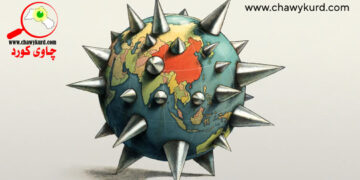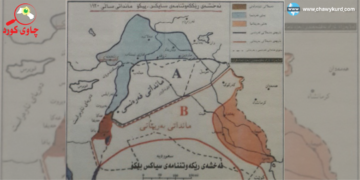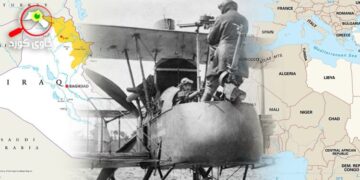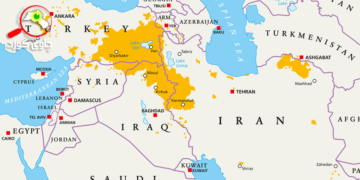Western military dominance is diminishing, while new threats are being added to existing ones. Defense planners consistently aim to create flexible, adaptable, and relevant forces, recognizing the difficulty of predicting future warfare and the type of military needed. Over-reliance on a single prediction can lead to national and human catastrophe if proven wrong. It’s challenging to foresee the nature of war even a decade from now, let alone several. Donald Rumsfeld’s tenure at the Pentagon illustrates how quickly defense plans can falter.
In early 2001, as Secretary of Defense, Rumsfeld initiated sweeping reforms. He believed senior military officials were nostalgically clinging to Cold War-era capabilities, focused on competing with the Soviet Union. Rumsfeld advocated moving away from doctrines that demanded widespread deployment of heavy ground forces—thousands of tanks, artillery, combat aircraft, and endless logistical reserves—in favor of lighter, more agile forces that could be rapidly deployed and leverage cutting-edge communication technology to quickly dominate battlefields. This seemed appealing, but no one anticipated the 9/11 attacks or America’s response. Ironically, researchers now see Rumsfeld’s reforms as a factor contributing to the U.S. entanglement and collapse after the invasion of Iraq. If Rumsfeld had been told in 2001 that the U.S. would spend nearly $1.3 trillion on two major ground wars in the next decade, he would have thought you insane.
In recent years, U.S. and British war planners in the region, particularly Afghanistan, adopted a dual strategy: conducting complex counter-insurgency operations while investing in training local civilians and bolstering their civilian capacities. The question now is: will we see another major U.S. military campaign in the region in the coming years?
The answer is likely no. While fragile and failing states and radical terrorism may persist for years, the staggering costs and uncertain outcomes of the Iraq and Afghanistan wars make it almost certain that Western leaders will strive to avoid such engagements for a long time. In other words, we can be almost certain that the future will not be like the present, though even that is unpredictable. Western military strategists believe that over the next forty years, compared to the same period in the 20th century, the Western world will not face any serious existential threat. The extreme destruction of two world wars and the end of the dangerous nuclear rivalry between the U.S. and the Soviet Union have reduced the likelihood of unrestricted great power conflict (though it’s not impossible), a decline unprecedented since the rise of the modern nation-state. Indeed, the number of casualties from all forms of war significantly decreased in the half-century from 1946 to 2006.
Chart 1: Less Lethal
However, the issue is not so simple. The bad news is that defense planners face increasing uncertainty about future wars: what kind of wars will we face, where will threats originate, and what does rapid and unpredictable technological advancement mean for friends and foes alike? Despite this unpredictability – an event like 9/11 next month is not out of the question – defense planners must make decisions that will profoundly shape warfare for the next four decades.
A prime example is military equipment development: how long does it take to develop a new weapon system, and how long will it remain relevant? Consider the Joint Strike Fighter III program, the most expensive defense-industrial program in history, projected by the Pentagon to cost $1.3 trillion. This program will replace the air fleets of the U.S., UK, Turkey, Italy, Australia, the Netherlands, and their allies with new, improved, and advanced fighter jets. The F-35, a multi-role combat aircraft capable of performing air-to-ground and air-to-air missions, became the backbone of the U.S. and other Western air forces by 2020 and is expected to maintain this position until at least 2065. While few analysts doubt the F-35’s dominance, with its sophisticated software and complex sensors enabling it to perform any mission, critics argue that, contrary to initial estimates, it is prohibitively expensive to produce. Its operational range of 600 miles (965 kilometers) also leaves ground bases vulnerable to attack.
Critics argue that due to changes in the nature of warfare and the enemies America faces, the air force needs longer-range strike aircraft instead of the F-35, meaning drones are more suitable. The Pentagon was supposed to purchase over 2,400 F-35s from 2015 onwards. When you have the money, you can buy whatever you want, but when military budgets become tighter and more limited, you don’t even know if investing in and buying the world’s most advanced multi-role fighter is the right thing to do. In any case, in the next few years, it will become clear whether this purchase was logical or utterly foolish.
Fortunately, understanding the sensitive and dangerous points that can ignite war is perhaps the easiest part of the challenge. For years to come, humans will fight over the same things they have always fought over: resources, land, tribes, religion, ideology, and other tensions arising from competition between nations. The bad news is that these factors are likely to combine in different ways than today, making prediction even harder. Over the next forty years, the global population will grow from its current 7 billion to 9 billion people, and the effects of global warming will become more pronounced. Competition for resources and the resulting social instability will intensify.
Many energy experts have long warned about the depletion of oil resources, but the discovery of new reserves, new methods of deep-sea oil extraction, and advancements in cheap shale oil and gas extraction methods have cast doubt on these predictions. However, the unpredictable political situations in numerous oil-producing countries (not just in the Middle East), the constant threats to the Gulf’s oil routes from state and non-state actors, and great power competition over Arctic energy reserves leave no room for optimism regarding oil.
Certainly, in the years leading up to 2050, oil may not be the biggest cause of resource-related wars. In the coming years, various factors will drive these tensions. One such factor is water. Water remains an essential element of human life, but global warming, outdated agricultural practices, and increasing population pressure will undoubtedly lead to greater scarcity. Yemen, which has faced conflict and violence in recent years, is likely to be the first country to truly run out of water. Unstable and nuclear-armed Pakistan, grappling with overpopulation and terrorism, once relied on the mighty Indus River to sustain its cotton and rice industries, but the Indus now barely reaches the sea. Water is one of the most significant obstacles to peace and stability in the Middle East: without the West Bank’s underground water reserves and access to the Jordan River, occupiers of Palestinian lands would have to change their lifestyles, and the peace process would face a major obstacle like water scarcity. Even water scarcity can negatively impact China’s economic growth and make the Communist Party’s foreign policy more aggressive. Water scarcity and rising temperatures in the coming years will be major drivers of mass migration, each of which can end in armed conflict: on one side are those seeking to reach a better country and migrate, and on the other are those seeking to prevent this group.
Territorial disputes are unlikely to cause major wars in the next four decades, but they are very likely to spark smaller conflicts. As seen in the 1982 Falklands War between Britain and Argentina, old grievances, when combined with military complacency and opportunism (or desperation), can ignite wars in the most unexpected circumstances and places.
Chart 2: China is Arming Up
Certainly, Kashmir and occupied Palestine will remain the most dangerous hotspots in the 21st century, but there are other vulnerable and dangerous areas. With China’s expanding military capabilities and growing confidence, Taiwan will become one of the primary concerns for American military planners. There are several land disputes between China and its neighbors over islands in the Western Pacific, and these could erupt into conflict at any moment.
“Religious-Sectarian Wars”
If the 20th century was the century of ideological warfare, the 21st century is likely to see numerous wars arise under the pretext of religion. Despite the hopes sparked by the Arab Spring in 2011, extremism continues its long-running conflict with Western values. Western reluctance to repeat the Afghanistan experience and discredit the doctrine of liberal intervention will lead to an increase in the number of fragile and failed states in the region, and also expand the options available to terrorist networks. If Muslim Pakistan and predominantly Hindu India cannot find a way to resolve the Kashmir conflict – which is both a territorial and religious dispute – then the current targeted terrorist attacks, especially against Indians, could escalate to a point where Hindus’ tolerance runs out. Such a conflict could lead to the world’s first war between two nuclear powers and perhaps the first nuclear exchange. In the Middle East, Arabs may come to believe that the U.S. cannot be a reliable ally, and with declining U.S. influence in the region, they may conclude that acquiring nuclear bombs is the only way to survive in the new Middle East.
“Unbalanced Balance: Time is Not on America’s Side”
In 2011, the American think tank RAND Corporation discussed the major military trends of the decades leading up to 2050, which are happening much faster and changing rapidly, and explained how these trends would cause the U.S. military to fail in modernization and be unable to confront crises. The first of these trends is the technological shift and the means of access that can challenge Western military superiority. For as long as people can remember, the U.S. has been significantly ahead of others in technology across all four military domains (land, sea, air, and space). But that trend is changing. Internet communications and text-based coding software, cheap remote-controlled missiles and mortars, light and large air defense systems, anti-satellite weapons, anti-ship missiles, and highly accurate long-range ballistic missiles capable of carrying nuclear warheads are all transforming the military capabilities of potential U.S. adversaries; China, which is gradually becoming an equal competitor to the U.S., is adding all the aforementioned capabilities and new ones. Don’t forget that Iranian missiles, which sometimes cost only a few hundred dollars, force Israelis to spend millions of dollars on missile defense shields. Or militia groups representing some countries against U.S. interests.
Furthermore, the emergence of cyberspace as the fifth military domain cannot be ignored. Cyber warfare technically empowers weak but militarily capable and skilled states (and non-state actors) to confront major players. What complicates the situation is that it is currently difficult to trace the origin of any attack, meaning that a proportionate response or deterrence of future attacks will not be simple. Military and civilian infrastructure have so far suffered the most damage from cyber-attacks.
“Robot War?”
How soldiers can carry out counter-insurgency missions with fewer resources will be a complex future issue. Based on the current model—which is not far from what Rumsfeld proposed—special forces that operate as a network, supported by armed drones and trainers, and aiming to develop the capabilities of local security forces, are complementary. But if this model fails—which experience shows is highly likely—military officials will be forced to make a difficult choice: either resort to old methods, such as clearing an entire area with a large army, or benefit from new technologies (like drones). In any case, the demand for more sophisticated drones that act as military “eyes and ears” and seize fleeting opportunities to attack targets will grow so much that by 2050, drones will replace conventional military aircraft in most missions. This reliance on drones is part of a broader trend towards the robotization of warfare.
“The End of NATO”
If the U.S. loses its military dominance by 2050, especially due to China’s growing regional hegemony, American strategists will try to revive the formal alliance system that existed during the Cold War and the era of military power balance with the Soviet Union. But the alliances that will be crucial in 2050 will not be in Europe, but will stretch from the Indian Ocean to the Western Pacific. Whether this new alliance will resemble NATO—which is likely to dissolve as a unified defense alliance by then—depends on how China manages its relations with its neighbors and the U.S.: whether it continues the same pattern of economic competition and cooperation, playing closely within the framework of a rules-based international system, or whether the spread of internal tensions turns it into an unpleasant country and an aggressive rival.
“The Atomic Bomb”
By 2050, despite the perceived anxiety of American military planners regarding China and the fear of cyber warfare, the greatest threat to humanity in the first half of the 21st century is likely to be the same as in the second half of the 20th century: the use of nuclear weapons. During the long years of the Cold War, the U.S. and the Soviet Union learned how to manage their competitive relations, and although they came close to war more than once, they gradually managed to maintain a balance of terror and moved in a direction where the possibility of using nuclear weapons (whether by accident or by design) decreased. Newly nuclear-armed states lack such experience, and most do not have the “strategic space” between Russia and the U.S. created by their geographical distance. The strategic space created between Russia and the U.S. had another factor: the fear of retaliation from the other side: most recently nuclear-armed countries cannot respond to a nuclear attack with a nuclear attack, because their arsenals are small and they do not have powerful launch systems (like submarines). This means that in the next 50 years, the likelihood of nuclear war between countries with small nuclear arsenals and unpredictable and unreliable neighbors is higher than the likelihood of nuclear war between the U.S. and Russia in the past 50 years.
We can say that the possibility of nuclear war between two superpowers capable of destroying the Earth is decreasing, and instead, the possibility of regional nuclear war that could kill millions and have catastrophic short-term environmental and economic consequences will increase (unless the proliferation of nuclear weapons slows down or stops and reverses). The next thirty years will determine whether the world is prepared to live with the increasing risks of nuclear weapons (which will one day certainly be used) or whether it considers the threat so severe that it is willing to do anything to end it.




























































